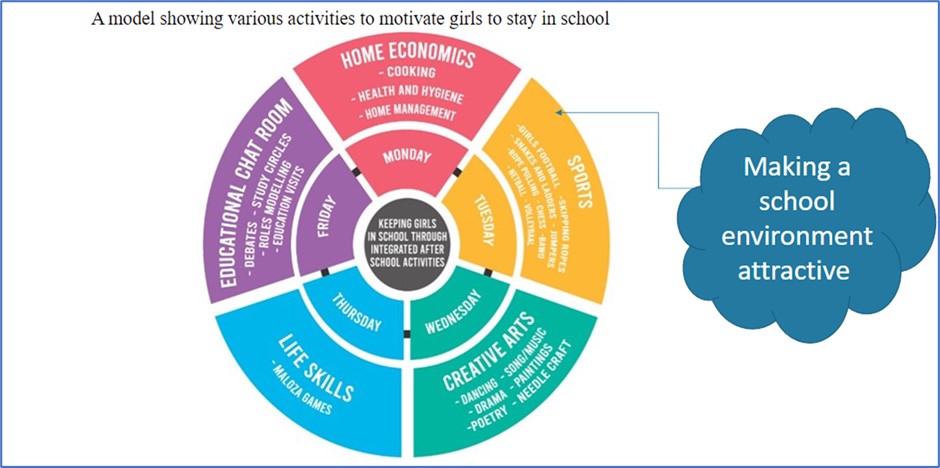Design Challenge:
How might we reduce cases of girls’ school dropout in senior primary school classes (standard 5 to standard 8) in Kanongola Primary School in the area of Group Village Headman Khwali, Traditional Authority Mwaza, Salima District always in a way that communities are made aware of girls’ rights, so that girls are completing their primary and secondary education and are also participating meaningfully in socioeconomic development?
Introduction:
There is a high school dropout rate for girls in primary schools in Salima District. In the case of Kanongola Primary School, girls dropout rate is higher in senior primary classes (standard 5 to standard 8). Enrollment statistics indicate a high enrolment of girls in lower entry classes and significantly small number of girls in standard 8, and consequently lower transition rate. Comparatively, in 2020/21 enrolment for girls was 108 in standard 1, while in standard 8 there were only 40 girls. Further, in the same academic year 47 girls out of 626 dropped out from school compared to 27 boys out of 551 during the same period. Past studies show that girls drop out from school due to child marriage, child labor, and teenage pregnancies among others. The experiment aimed at establishing ways of motivating girls to stay in school, complete their primary and further secondary school education.
Results:
By the end of the experiment, 6 girls who had dropped out of school in previous years had been reinstated to school ranging between standard 5 and 8. There is notable change in involvement of girls in leadership roles in various activities attributed to improved self-esteem, for example through improved public speaking confidence. Girls took leadership roles by training their fellow girls in different trainings they had participated in, including sewing of reusable sanitary pads, sewing of dusters and cooking. There was notable improvement of girls participation in sporting activities e.g., volleyball, football.
Scaling:
The experiment will be implemented throughout the 2022-23 academic year in order to diversify learnings with modifications based on feedback from reflection meetings with the stakeholders at the end of each school term.
